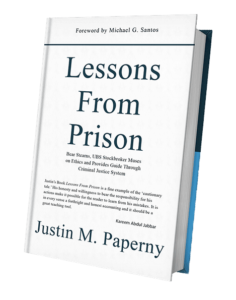What Should I Know About Food Services and Prison Commissary?
If you heard someone describing their meal in a restaurant as being “about as good as prison food,” what would you think?
Keep that thought in mind so we don’t have to describe it. Instead, we’ll tell you the basics of what to expect in food services and the prison commissary.
The good news is that policy requires the Food Services Department to prepare three meals each day for the people in prison. If the prison is operating in accordance with a normal schedule, meaning not on “lockdown,” at least two of those meals will be hot meals.
In our opinion, food may taste better, with more generous portions, in some prisons than in others. A change in wardens or a change in administrators can change the entire composition of the menu. But overall, as the saying goes, it’s all prison food.
The daily food budget per inmate may not be the same in each institution. In penitentiaries, for example, wardens may allocate higher budgets for food. Administrators of those institutions manage a more violent, predatory, and volatile group of men. They may pacify the “institutional mood” by serving more and better food. People inside may receive double cheeseburgers and a mountain of crispy french-fries. They may be able to pass through the food line for second servings. Other prisons do not place as much emphasis on food preparation.
On the low end, administrators may allocate less than $3.00 per day for each inmate, and on the high end, administrators may be able to average more than $4.00 per day for each inmate. Rather than for each meal, the per-day budget must cover three meals each day.
Atmosphere for Food Services and Prison Commissary:
More than 8 out of 10 federal prisons serve meals for the general population in a large cafeteria, the chow hall. Lines in crowded prisons may take 30 minutes, which limits the amount of time to eat. From the main serving line, men usually continue on to a salad and beverage bar. They sit at two- or four-man tables. In higher security prisons, men segregate themselves in different areas of the chow hall by clique, race, ethnic background, and geographical origins. In low and minimum-security prisons, segregation is less apparent.
Various staff members at the Department Head level or higher are present during each meal in the chow hall. They call it standing mainline, meaning staff members are available to respond to inmate questions. A heavy presence of staff keeps a vigilant eye out for “stealing” or moving food from one place to another without authorization. Prisoners should expect staff members to pat search them after any meal. Taking food from the kitchen without authorization can result in a 200-series disciplinary infraction with severe sanctions that include loss of good time and other sanctions.
For people in the SHU, on lockdown, or in prisons without a chow hall, orderlies deliver food at room temperature through slots in the door.
Alan’s Story of Mainline:
“I was in the chow hall in Atlanta. The warden stood mainline, and I wanted to talk with him about a problem I was having with the mail. Curly stood ahead of me in the line and I couldn’t help hearing what he said to the warden. As always, there were a few other staff members standing around the warden when Curly spoke to him. Curly says, ‘Warden, I got a problem down in the law library. I’m trying to appeal my case and I need a certain citation. The law book with the citation I need has some pages ripped out. I keep telling the librarian, but he never orders the book.”
“The warden stood there listening to Curly’s complaint. When Curly finished, the warden said to Curly, ‘Hold on a minute.’ Then he called over a lieutenant. ‘Lieutenant’ the warden said, ‘lock this man up. Send him out to Lompoc, in California.’ While the lieutenant was putting handcuffs on Curly, the warden said, ‘Let’s hope they have that law book you’re looking for out there.’”
After listening to how the warden treated Curly, Alan said he stepped away from the line. Conversations with a warden could bring unanticipated results.
Meal Times:
Staff members operate prisons in accordance with a strict schedule. Every day, the cafeteria opens for meals at the same time—unless there is some type of disturbance.
On weekdays, breakfast usually begins at 6:00 a.m. By 6:30, the loudspeaker will announce “Last Call” over the institutional broadcast system. Prisoners have about ten minutes to make it to the chow hall for their meal after last call.
The lunch meal is usually the most popular meal in the institution. Many people skip the breakfast meal, and some may avoid dinner. The vast majority of people go to the chow hall for lunch.
The chow hall usually starts serving lunch around 11:00 and locks its doors by 1:00. People have the option of going to any of the meals, but more people go to lunch and dinner. As a result of the heavy crowds, prisons release the units in waves. Workers from the UNICOR factory usually eat first. People that work on other details eat next. Finally, those in the housing units are released according to how their unit scored in the weekly sanitation inspection. Staff members rush people through the meals to accommodate the next wave.
After the 4:00 p.m. daily census count, unit officers distribute mail to each prisoner. Once the mail has been distributed, the chow hall opens for dinner. It remains open for about one hour.
People in prison get their meals on either plastic trays or plates. They eat with durable plastic knives, spoons, and forks. Sometimes they eat with disposable plastic silverware. The cups are plastic as well. People in prison do not use metal silverware, which could be converted into weapons. Nor do they see much glass or porcelain.
On weekends and holidays, prisons may operate on a different schedule. The chow hall usually opens 30 minutes to an hour later for the breakfast meal, and instead of lunch, the institution serves a brunch meal. Dinner is served at the regular time. On holidays, the meal may be limited to bagged sandwiches and chips.
Food Type:
The Food Service Administrator is responsible for preparing the menu. In our course, we provide sample menus. The sample menu is one part of a five-week cycle. The meals are quite similar during other parts of the cycle, but the days are rotated on which the meals are served. Most institutions allow inmates to choose a soy-meal substitute or cheese if the prisoner does not want to eat meat.
Although food on the mainline may be rationed, larger prisons offer a separate salad bar and “hot bar” from which prisoners are free to eat without limits. Hot bars in some prisons offer beans and rice virtually every day. Salad bars offer combinations of lettuce, spinach, carrots, cucumbers, cabbage, and occasionally other kinds of vegetables. Such options make healthier diets possible.
Gerard’s Story:
“I never eat off the mainline. I figure the food served off that line has to be the lowest quality possible for human consumption. Since I’m going to be in prison for over two decades, I’m consciously taking every precaution to preserve my health. I’d hate to get out of here and learn that I have some kind of cancer, influenced by the type of food I’ve been eating for 20 years. I quit eating all meat and all fried foods. With support from family, I buy cans of tuna and mackerel from the commissary that I bring with me whenever I come to the chow hall. I grab a bowl of rice and beans from the hot bar, and vegetables from the salad bar. Then I mix in my canned fish, and that’s my meal.
“Also, since I can’t arrange a dental appointment when I want, I don’t drink anything but water. No coffee, tea, or sodas. I don’t want the stains on my teeth, which I want to keep. A lot of guys in prison lose their teeth, probably because of their diet or hygiene habits. When they open their mouth, you see a black hole, which probably won’t help their search for employment when they get out. I’m doing everything I can to minimize the downside of decades in prison.”
Preparations:
Staff members direct people that work in the kitchen to bring in the appropriate quantity of food from the warehouse before each meal. Inmates provide all the labor to prepare the meal in accordance with the daily menu—which always is subject to change. Staff oversee rations and discourage people from stealing. They neither cook nor clean. In my book Lessons from Prison, I wrote about my experience of having to clean pots and pans for an hour or two each day when I started serving my federal prison term.
While others serve people in the general population from the main serving line, staff members watch every plate closely to ensure that the inmate servers are not providing too much food. In higher-security prisons, less scrutiny is given to the portions. Staff members may have more pressing matters to occupy their time—like avoiding disturbances or mutiny.
Special Meals in Federal Prison:
Certain religions require followers to adhere to strict dietary laws. To accommodate these special needs, the BOP makes common fare meals available to those who make the choice. Common fare meals, which the BOP purchases from outside vendors, meet kosher and other religious requirements.
Rules prohibit people that choose to eat common fare from eating anything off the mainline or the hot bar. They cannot have a choice from one day to the next. Rather, if they are on the common fare line, they are restricted from the other meal options. Staff will discipline people if they’re assigned to common fare but attempt to get food from the serving line. The chaplain signs people up for common fare, but kitchen staff monitor compliance with the program.
Administrators also make provisions for the Muslim inmates that fast between sunup and sundown during the Ramadan season. During Ramadan, Muslim prisoners cannot eat during the regularly served meals. The BOP provides them with meals at times that are in accordance with their religious beliefs. Most institutions also offer one ceremonial meal each year for the various religious groups.
On federal holidays, the BOP traditionally prepares special meals that are far more elaborate than on any other day. People look forward to larger servings selections that aren’t available at other times. Christmas and New Year’s meals, for example, may include game hens, wild long-grain rice, and layered salads with olives, cheese, and croutons. On Thanksgiving prisoners can expect turkey, usually in extra-large portions, with stuffing, yams, and cranberry sauce. During the summer holidays, Memorial Day, 4th of July, and Labor Day, administrators may approve “cookouts” with all-you-can-eat barbecue hamburgers and hot dogs. Desserts, also, are much more extensive during the holiday meals.
Prison Commissary:
All prisons operate a commissary. People can purchase food to supplement their diets from the commissary. They can also purchase sneakers, toiletries, and some athletic wear. Our course offers a sample list from a commissary list. The menu of items available varies from one prison to the next.
Besides items on the commissary list, prisoners also may have access to special-purchase orders. Those that participate in arts-and-crafts or hobby-shop programs, for example, will be able to purchase their supplies from outside vendors through the commissary. Some prisons authorize people to purchase special athletic apparel, too.
Each prisoner is given a monthly spending limit in accordance with a national policy, which is adjusted for inflation periodically. Generally, the spending limit does not include items such as stamps, credits for the Inmate Telephone System, or email system.
In theory, a person can make it through prison without any money. But typically, a person needs about $100 a month to get basic toiletries and so forth in prison. On the high end, a person that has access to $600 a month is able to eat and live better in prison. As is the case with anywhere else in America, higher levels of income make life easier.
People cannot shop at will in prison, however. Most institutions assign a specific weekday for each person to shop. Registration numbers will determine the specific day a person can shop. On his assigned day, the person turns his commissary list in to the commissary officer. A prisoner that works in the commissary gathers items marked on the list. A staff member then charges the inmate’s commissary account. Prisoners may replenish their commissary accounts through their prison earnings or from the money that others send them from the community.
Those being held in SHU are generally restricted in their access to prison commissary items.
Besides the prison commissary, some prisons also make vending machines available. Vending machines may carry sodas, candies, cakes, and food like sandwiches or pizzas that people can heat in unit microwaves. People with financial resources may refrain from eating in the chow hall altogether and gets all of the meals from the prison commissary or the vending machines.
Jake’s Story:
“I avoid the chow hall for a reason. It’s not that I don’t like the food. To be truthful, I never expected much from prison food, so I’ve never been disappointed. But I’ve been in a long time. During the time that I’ve been in, most of the group problems I’ve seen began in the chow hall. There are just too many people in one place. Too much tension. Besides that, there is all that searching. I try to avoid the staff as much as possible. If I go to the chow hall, I’m putting myself in their line of sight. There is a good chance an officer will want to search me. Or someone may say something I don’t like, putting me in a position of having to respond.
For me, it’s easier just to avoid it all. I pay guys who work in the kitchen to bring me vegetables. I mix the vegetables with food I buy from the commissary. Or I buy sandwiches from the vending machine. We all make choices. I choose to avoid the risks that come with the large crowds in the chow hall.”
Final Word about Food Services and Prison Commissary:
Obviously, food plays a huge role in every person’s life. We need food to live, and people in prison rely on administrators to provide it. Food availability varies from one prison to the next. We advise people not to expect much in order to minimize disappointments. Complaining about food is a common pastime in every prison. It unites people’s frustration. But it doesn’t do much else.
Justin Paperny




